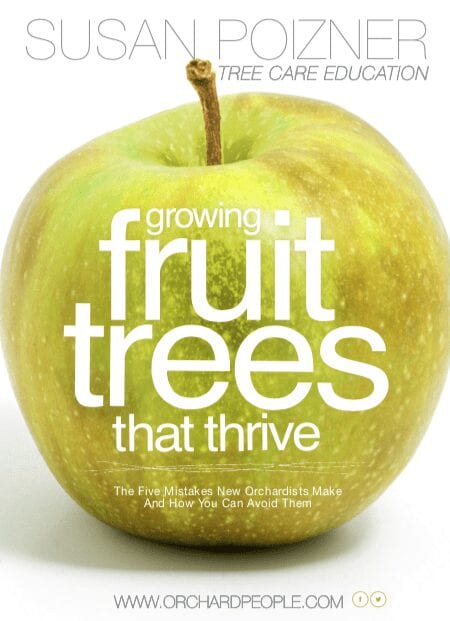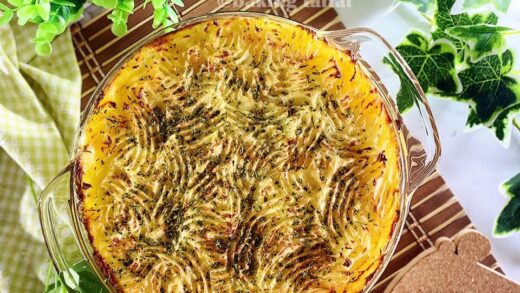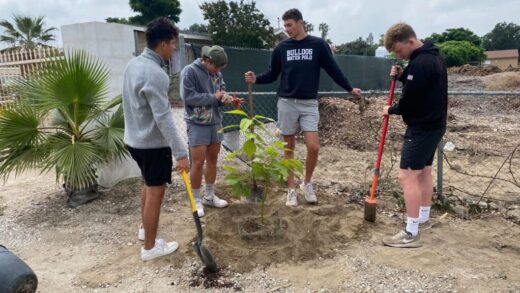
Growing fruit trees can be incredibly rewarding, but pests like plum curculio or peach tree borers are a constant challenge. These insects can wreak havoc on your fruit trees and destroy your harvest. Many growers turn to pesticide sprays, including organic ones, but they can damage the environment – and pests can become resistant over time. But what if there was another way? Enter beneficial nematodes!
I recently had the chance to dig deep into the world of beneficial nematodes with David Shapiro-Ilan, Research Leader and Supervisory Research Entomologist with the USDA Agricultural Research Service. Here’s what I learned about harnessing the power of these microscopic critters for effective fruit tree pest control.
What are Beneficial Nematodes?
Beneficial nematodes are microscopic roundworms that live in the soil. “Some of the nematodes are beneficial, such as the insect-killing or entomopathogenic nematodes, also known as beneficial nematodes,” David explains. These tiny creatures, which are almost invisible to the naked eye (they might look like little dots floating in a glass of water), can hunt down and kill insect pests that threaten fruit trees.

How Do You Control Fruit Tree Pests with Beneficial Nematodes?
One of the most fascinating aspects of beneficial nematodes is their hunting strategy. David explains that these nematodes “don’t just move randomly in the soil, they move in groups like packs of wolves trying to find the caribou that they’re going to take down.” They enter the insect through natural openings (like the mouth, anus or breathing holes) or directly through the cuticle, which is the insect’s outer “skin”.
Once inside, nematodes release symbiotic bacteria that work in tandem to kill the insect from within. Once they are inside their prey, beneficial nematodes feed on the insect’s body and reproduce. Then their offspring will find other pests to attack and continue the cycle.
The most important thing for any grower is to buy a beneficial nematode product that targets the specific insect pest that you want to control (more about that below). Then, follow the instructions carefully to mix the product with water and spray it onto the soil. Nematodes need moisture to survive so ensure that the soil is already moist, then spray this mixture onto the soil at the base of the infected tree. After applying the spray, irrigate the area well and let the nematodes to do their work!
For more detailed steps, visit the Philadelphia Orchard Project’s excellent guide.
Can Beneficial Nematodes Control Pests When They Are on Tree Foliage, Branches and Bark?
Beneficial nematodes are semi-aquatic and thrive in soil with enough water to keep them alive. Researchers have developed innovative gel-based formulations so growers can spray nematodes onto a tree’s leaves, bark, and branches. These formulations keep the tiny nematodes alive and hydrated for long enough to start killing insect pests, even if they are sprayed onto the tree’s canopy.
“We developed a gel that’s used most often as a fire gel,” David says. It protects houses and other structures against wildfire. So, we thought it would protect the nematodes too against desiccation and UV light, and it does a good job at that.”
The gels can be applied directly to wounds and holes on the tree as it might be when targeting peach tree borers. Or for broader coverage, it can be sprayed onto the canopy. But here you need to adjust your sprayer.
“You can really use any standard agricultural equipment, boom sprayers, handgun sprayers, backpack sprayers that people would use for chemical insecticides. The only thing different is if you have fine screens, you’d want to take those out so they don’t shred the nematodes, but otherwise really everything else is the same.”

Which Pests are Susceptible to Beneficial Nematodes
Which Pests do Beneficial Nematodes Kill? Most of the susceptible pests will spend at least part of their lifecycle in the soil and that’s when the nematodes can easily hunt them down and destroy them.
But you need to carefully choose a nematode species that will effectively target the pest that you want to control. In the chart below, you can see several fruit tree pests that are susceptible to beneficial nematodes. And in the last column, you can see which species is perfectly suited to control that pest.
Table: Which Fruit Tree Pests Can Be Controlled with Beneficial Nematodes (Also Known as Entomopathogenic Nematodes (EPNs).
For a full list, see “Entomopathogenic Nematodes as Models for Inundative Biological Control” by David I. Shapiro-llan,, Selcuk Hazir, and Itamar Glazer, you can see a number of the susceptible pests and the strain of Beneficial Nematodes that targets them.
| Pest Common Name | Pest Scientific Name | Key Crop Targeted | Primary EPNs used* |
| Borers (e.g., peachtree borer) | Synanthedon ssp. And other sesiids | Fruit trees and ornamentals | Hb, Sc |
| Citrus root weevil | Pachnaeus spp.(Coleoptera:Curculionidae) | Citrus, ornamentals | Sr, Hb |
| Codling moth | Cydia pomonella (L.) | Pome fruit | Sc, Sf |
| Cranberry girdler | Chrysoteuchia topiaria (Zeller) | Cranberries | Sc |
| False codling moth | Thaumatotibia leucotreta(Meyrick) | Citrus | Hb, Hz |
| Plum curculio | Conotrachelus nenuphar(Herbst) | Fruit trees | Sr, Sr |
*Hb, Heterorhabditis bacteriophora; Hz, H. zealandica; Sc, Steinerema carpocapsae; Sf, S. feltiae; Sr, S. riobrave.

Fruit Tree Care Newsletter
Sign up for our monthly newsletter and we will send you our eBook “Growing Fruit Trees That Thrive.” You can unsubscribe at any time.
How Can You Control Plum Curculio with Beneficial Nematodes?
Plum curculio (Conotrachelus nenuphar) is a pest that attacks many types of fruit trees, including plums, apples, and peaches. Female insects cut small, crescent-shaped slits into the fruit to lay their eggs. Once the eggs hatch, the larvae burrow into the fruit and feed on the flesh, making it unappealing.
This is a tricky pest to defeat, but beneficial nematodes can help.

“Plum curculio is a difficult one because they’re coming in as an adult and attacking the fruit directly,” he says. So in this case you would need to spray the tree with a gel based nematode product rather than the soil. The problem is that efficiently covering the entire tree canopy with a spray can be challenging and costly.
So the solution, David explains, is to wait until the plum curculio infested fruit drops to the ground. Then spray the soil with the appropriate species of nematodes and they will kill the plum curculio larvae in the soil. This will help wipe out the next generation of this pest.
“Another thing that we’ve worked on with some collaborators is using trap trees. So you attract most of the plum curculio to one or a few trees per acre. Then, when the fruit drops, you apply the nematodes.”
This approach will both kill off the next generation and help direct the pests away from the rest of your orchard trees.
Can You Control Peach Tree Borers with Beneficial Nematodes?
Peach tree borers (Synanthedon exitiosa) are another problem for growers. The female borers lay their eggs in the bark of the tree near the base of the trunk. Then, when the eggs hatch, the larvae tunnel through the tree’s cambium layer, which is the part of the tree where nutrient and water transport occurs.
These larvae feed on the inner bark and cambium and this weakens the tree over time. Severe infestations can even kill the tree outright!
Again, beneficial nematodes can come to the rescue.
“Down here in middle Georgia, we’ve seen the nematodes do really a great job in killing peach tree borers. We can get consistently as good or better control targeting peach tree borer compared with the standard chemicals such as chlorpyrifos.”
They apply the nematodes towards the end of the egg laying season. David says that in Georgia that happens in September or October. “Then we might do a second application in the very early spring just to clean up anything that’s remaining. So timing is very important.”
How Long Can Beneficial Nematodes Survive in the Soil?
If you are buying a beneficial nematode biocontrol product, you want to know that these critters will stick around in the soil for a while after application! After all, no one wants to invest in a product that only offers temporary relief.
“The general thinking has been that you will have to apply them every year,” David mentions. This is because while they can live and reproduce in soil, the population levels typically drop to below effective numbers by the following year.
But researchers are working to develop strains that can survive for longer. So, while annual applications may still be recommended for now, the future might hold more long-lasting solutions. Some progress has been made in that there are several reports of single nematode
applications providing insect control for multiple years.
Do Nematodes Destroy Plants and Trees?
Nematodes sound like heroes! But, honestly, not all of them are good. There are many types of destructive nematodes, like root knot nematodes (Meloidogyne spp.), that attack roots and weaken that plant or tree.
But Beneficial nematodes may be able to help out here too. “ There’s a fair bit of research that’s out there on using the good nematodes to kill the bad nematodes, such as root knot nematodes,” David says.
Can Beneficial Nematodes Become Invasive?
While we want those beneficial nematodes to do their job and destroy fruit tree insect pests, there is another concern. If we introduce these creatures to our gardens and orchards, can they become invasive and compete with naturally occurring organisms in our soil?
According to David, research shows that should not be a problem with beneficial nematodes.
“First of all, we generally use species that are already endemic to the U.S,” he says. There has been a lot of research to see if these beneficial nematodes are killing beneficial insects like lady beetles and the conclusion is that is not happening.
“It’s overall found that the impact is either nothing or just negligible in the long run.”

When is the Best Time to Control Fruit Tree Pests with Beneficial Nematodes?
Beneficial nematodes are most efficient attacking pests during the stages when they are in the soil, according to David.
“Many insects, even though they may have an above-ground stage, also have a soil stage. So you might apply the nematodes to the soil at that time and kill them.” The problem is that for specific pests like peach tree borers, timing is crucial, and application should be done towards the end of their egg-laying season.
For home growers, understanding the specific pest you’re targeting and choosing the appropriate nematode species is essential. Fortunately, many online resources and manuals can guide you through this process. As David suggests, “You can do a lot of research on the web just to see which nematodes are best for which target pest.”
Once you find the appropriate product, read the instructions carefully to apply it at the right time.
The Future of Beneficial Nematode Research
The future of beneficial nematode research is promising, with exciting advancements on the horizon. Researchers are exploring the use of nematode pheromones to direct their behavior more effectively. “We found that these nematodes talk to each other with pheromones…We can then use those nematode pheromones to direct their behavior,” David says.
Incredibly, beneficial nematodes are even being tested for their efficacy in space! According to David, “We did one experiment where we sent the nematodes into space…and we found that they did do their job and do very well in space as well.” This underscores the potential versatility and adaptability of these tiny yet mighty creatures.

Final Thoughts
Beneficial nematodes are a promising, environmentally friendly alternative for fruit tree pest control. They offer a means to protect your trees without the downsides associated with chemical sprays. David’s research and insights offer hope and guidance for growers looking to adopt more sustainable practices.
If you’re battling fruit tree pests, consider giving beneficial nematodes a try and learn about other ways to improve your soil naturally. For more detailed advice and guidance on nematode species selection and application techniques, be sure to consult reliable sources and possibly reach out to experts in the field.
For additional information and helpful resources, check out David Shapiro-Ilan’s upcoming book (Entomopathogenic Nematodes as Biological Control Agents (edited by David I Shapiro-llan, USDA-ARS, Georgia, USA,
Edwin Lewis, University of Idaho, USA) and stay tuned for more exciting developments in this field. Let’s harness the power of nature to keep our fruit trees healthy and productive!
Join the Orchard People Community
If you’re passionate about growing fruit trees and want to stay updated on the latest tips, techniques, and innovations, join the Orchard People community. Sign up for our monthly newsletter at orchardpeople.com/sign-up, and you’ll receive valuable information delivered right to your inbox. Plus, you’ll get early access to videos, in-depth articles, and exclusive deals. Let’s grow together!

How to Grow Your Own Beneficial Nematodes for Fruit Tree Pest Control
Want to try your hand at fruit tree pest control with beneficial nematodes? These tiny critters are typically reared in labs by researchers and commercial producers. However, you can try to do this at home. Most of the items can be sourced from pet stores, online suppliers, or agricultural suppliers. Maintaining the right temperature may require a bit of effort, but a simple space heater or air conditioner can usually suffice.
This information is extracted from the Journal of Insect Science (2023), from the paper titled “A sustainable grower-based method for entomopathogenic nematode production” by Camila Oliveira-Hofman, Shawn Steffen, and David Shapiro-Ilan.
Materials
- Clear plastic containers in various sizes, Petri dishes, and containers with lids.
- Moist paper towels for lining containers to maintain humidity.
- Polyacrylamide gel available from chemical suppliers like Soil Moist, JRM Chemical.
- Nylon screen mesh with a 2 mm x 2 mm pore size used to separate nematodes from cadavers.
- Unchlorinated water for rinsing and hydrating the gel.
- Live insect larvae such as Galleria mellonella (greater wax moth larvae) or Tenebrio molitor (mealworms), which can be purchased from pet stores, online suppliers, or biological suppliers.
- Temperature control tools like a temperature-controlled room, incubator, space heater, or air conditioner to maintain room temperature at approximately 25°C (77°F).
Instructions for Rearing Nematodes
- Start by placing the initial infected larvae (cadavers) in Petri dishes lined with moist filter paper and let them sit until nematodes are ready to emerge, which takes about 7-10 days.
- For mass inoculation and incubation, place one infected cadaver in a clear plastic container lined with moist paper towels, adding 50 live Galleria mellonella larvae.
- Keep the container at 25°C, which you can achieve with a regular room maintained at this temperature using a space heater or air conditioner.
- Remove any cadavers that don’t show the expected color change to avoid contamination. (what is the expected color change?)
- Transfer the cadavers to a container with hydrated polyacrylamide gel, placing them on a nylon screen.
- After 5-7 days, nematodes will move into the gel below the screen.
- Remove and discard the depleted cadavers.
- Use the gel with nematodes for the next production round, direct application, or storage.
- If needed, extract nematodes from the gel using water and a screen, dilute them in water and apply them with standard spraying equipment.
By following these steps and using the listed tools, you can effectively rear beneficial nematodes for pest control in your garden or small farm.

Susan Poizner
Director, OrchardPeople.com Fruit Tree Care Education
Learn more about Susan on the about us page.
#Control #Fruit #Tree #Pests #Beneficial #Nematodes




